
views
Planting Hostas

Choose a planting site. Hostas do well in partially shady areas, making them a great choice for planting under trees or near taller plants in your garden. They need soil that drains well and will stay evenly moist. The type of hosta you choose should also factor into where you decide to plant it; if your hosta is capable of getting quite tall, make sure you plant it in a place where it will get ample shade from the sun once it grows larger than the plants around it. Since hosta roots crowd out the roots of weeds, they are a good choice for use as a ground cover. If you're going to use them for this purpose, however, you need to be sure the planting site is sufficiently shady. Make sure the site you choose is not too windy. Choose a place that is sheltered from winds exceeding 35 mph (56 km/h).
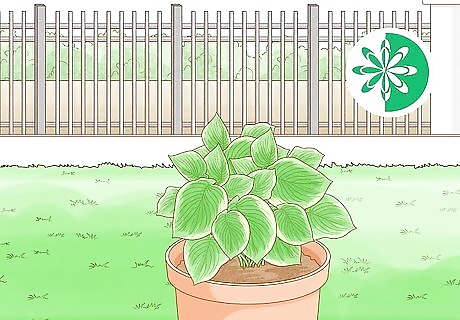
Plant hostas in the spring. Planting hostas in the early spring, after the last frost has occurred, gives them time to take root and settle in before the hot summer months arrive.

Prepare the soil for planting. Hostas do well in most climates and thrive in moist soil, but they're at their best in average or damp soils that are slightly acidic. Prepare the planting site by using a garden rake or hoe to loosen the soil to a depth of about a foot, then mixing it with a light application of fertilizer or compost. This will enrich the soil and help the hostas do well in a variety of weather conditions.

Dig holes for the hostas. The holes should be as deep as the root ball and twice as wide. Space the holes 1 to 3 feet (0.3 to 0.9 m) apart, depending on what variety you are planting.

Plant the hostas. Set the hostas into the holes so that the top of the root ball is level with the ground. Fill in the hole with soil and pat it gently around the base of the plants. Water the planted hostas well.
Caring for Hostas
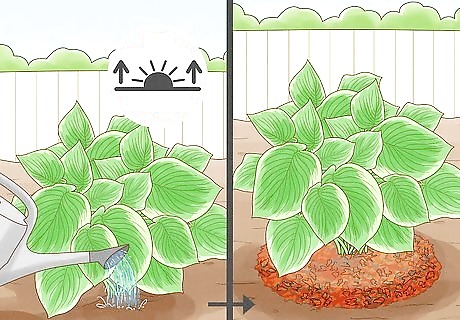
Water your hostas frequently. Hostas will wilt and turn brown if their soil gets too dry, so make sure to water them frequently to keep the soil moist. Water hostas under the foliage at their bases to prevent the leaves from getting burned by the sun. Watering hostas in the morning will help keep them hydrated during hotter parts of the day during the summer. You can sprinkle mulch around the bases of the hostas to help keep the soil moist.
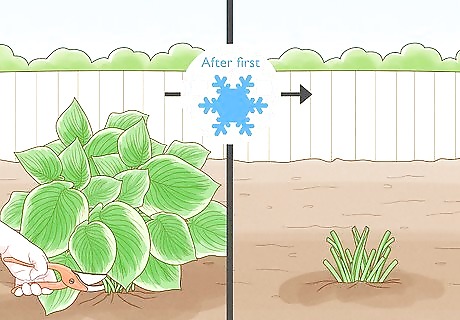
Cut hostas back after the first frost. Hostas don't stay green all winter, so after the first frost of fall, you'll probably want to cut them back - otherwise they'll look dried out and dead all winter long. Use pruning shears or a scissors to cut them back to a couple of inches. They'll come back out in the spring. You can also cut hostas flowers. Whether you cut your hostas when they're flowering or once the bloom has faded is up to you!
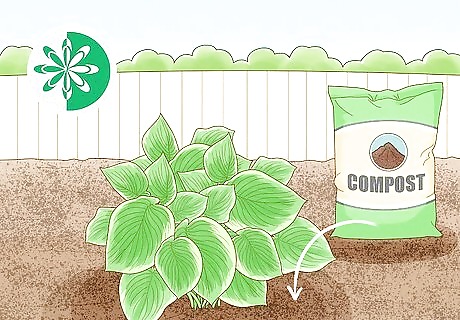
Compost the soil in the spring. At the beginning of the growing season, help bring the hostas back by adding compost to the soil. Add a layer of mulch to help retain moisture. Water the area thoroughly to help the new growth emerge.
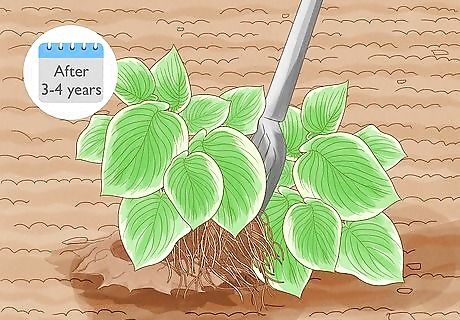
Divide your hostas after 3 or 4 years. Hostas are quite durable, and it's easy to divide them to share with friends or plant in other areas of your garden. To divide a hosta, lift it out of the ground and separate a few stems and their roots from the main part of the plant. This is best done in early spring, when the leaves are still curled, but you can do it at any point during the summer if your plants are healthy. This will help maintain the overall quality of your Hostas and will make doubling your Hosta population easier.
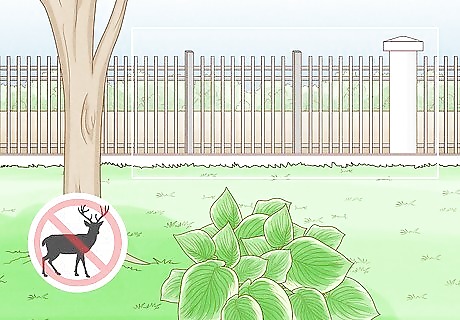
Protect your Hostas from pests. Hostas are favorites of deer, snails, and slugs. If these animals are common in the area you live, take precautions to protect against these species. Keep deer away by building a fence around your yard, or luring them to the edges with other deer-friendly plants. Many gardeners find that setting out shallow bowls of beer around the hostas is an effective way to get rid of slugs. Eliminate black vine weevil with an insecticide soap. Prevent nematodes by removing or drying overly wet foliate. If you see nematodes, which look like roundworms and feed on leaves, remove affected plants and destroy them.

Protect your hostas from disease. Maintaining the correct watering, mulch, and conditions are the key to keeping disease away from your hostas. Here are some measures you can take to prevent and combat disease: Use fungicide spray if you see large spots with a dark border on your hostas, as this could be a sign of Anthracnose. Fight Anthracnose by preventing your hosta plants from getting too wet. If you see brown and wilted leaves along with white masses on the plant, pull any mulch away from the hostas, as this could be a sign of Sclerotium Blight. Water responsibly and prevent your hosta plants from getting too wet in order to combat Crown Rot.


















Comments
0 comment